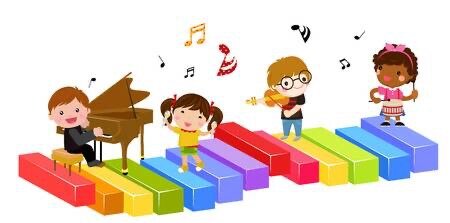5 Tips for Teaching Kids a New Language at Home
Navigating Life at Home with Kids
Right now many of us are finding ourselves with more free time on our hands than we are used to. As we are forced to stay home, some of us have made ambitious plans to finally learn that new skill or hobby we’ve been putting off for years. Why not take this time to also help your child learn something new? The gift of learning a new language is one of the most exciting, rewarding, and useful things you can give to a child.
Yet these strange times have brought in an entirely new set of challenges and questions. How do we explain to our children why they cannot see their friends or return to school even though they themselves feel perfectly healthy? It can be difficult to help motivate them to learn at home while also staying productive and taking care of ourselves. Not to mention the challenge of creating a calm and conducive learning environment at home.
How to Start Language Learning for Kids
As with anything, it’s important to approach time at home with a balanced mindset. At Shoonya we believe the best way to teach your child a new language is to make it interactive and fun while staying educational.
We’ve compiled five tips to help you teach your child another language while staying at home. You might even learn a few things yourself!
1. Start small.
Teaching a child a whole new language all at once can feel like a big task for both you and them. But don’t be discouraged by the work ahead of you! First, set a goal for your child to learn a few letters, and then a few words every day. Thematic learning is a powerful tool for helping children apply the words they are learning to real world concepts and will also help them tackle short sections over a period of time.
2. Utilize Game-Based Learning.
Game-Based Learning (or GBT) is another great strategy to use when teaching children. GBT is based on the idea that through repetitive practice and goal-oriented lessons, children will be more motivated and engaged throughout the learning process. According to one study, GBT improved a student’s retention of information by 90% and encouraged hands-on, experiential learning.
Language learning apps are the perfect way to implement game-based strategies! Nowadays, children are already comfortable with educational technology and will enjoy interacting with fun characters and games throughout their language learning practice. With apps, kids also feel rewarded when they master something new and will remember the positive learning experience all throughout their learning journey. Plus, they can engage in self-directed learning if you need to focus on other tasks at hand!
3. Make it part of your daily routine.
From classroomclipart.com
Routines are so important when it comes to creating consistent learning habits. Establishing a specific time of day reserved for language practice will ensure your child keeps up with the language and can advance their progress a little everyday. Mornings are often most productive, so try adding in a little language chapter or lesson after breakfast each day or before an early snack to make it an official routine.
4. Watch television shows and listen to music in your language of choice.
From 123RF.com
Another easy way to incorporate more language learning is to consume content in that new language. Hearing real native speakers use the language in daily conversation will help expose and immerse your child in a whole new world. This is also a great way to teach them about diverse cultures and make them more familiar with different dialects and speech patterns. Your child probably asks to watch TV already, so why not make it educational in the process. Check out this article on how one family uses Netflix Kids to help teach their children new languages.
5. Set up a separate and positive learning environment.
From clipart.com
While home is a great place for laughter, family, and comfort, sometimes it can be difficult to stay focused and separate work from play (especially for a small child). Try creating a designated learning space for your child so that when they sit down, they are focused and ready to learn. You can even make it a special “Language Learning Corner” to make it even more fun. Let your child pick out photos of different countries or the country of their language-in-progress and tape them up around the space to inspire them to keep learning. (Check out our Pinterest for some cool images of classrooms around the world!)
We hope these tips encourage you to take advantage of this time at home and start teaching your child a new language. Language learning is the perfect activity to tackle right now and can help your kids feel more connected to the world around them in this time of physical separation. We can’t wait to see what they learn!
Leave a comment below telling us what language you are taking first. Can’t decide which to start with? Feel free to download our free iOS language learning app where you can choose between nine different languages, from Arabic to Hindi!







